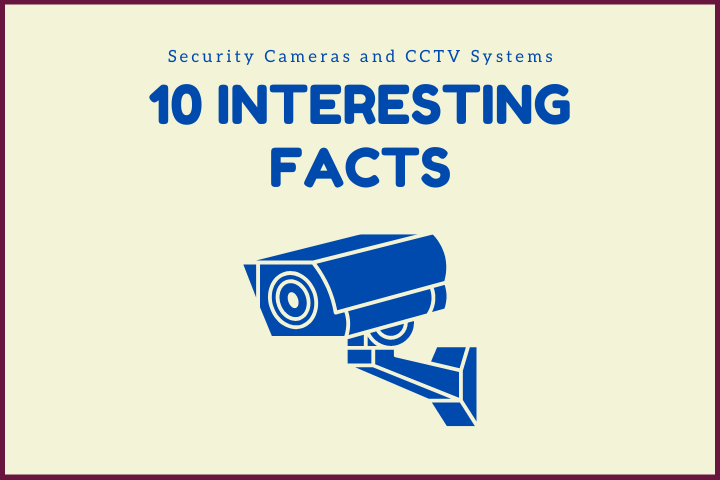A CCTV, or closed-circuit television, is a security camera system that transmits a signal to a specific set of monitors. This is in contrast to an open-circuit television system, which broadcasts a signal to anyone who can receive it. CCTV systems are often used in public places to deter crime and vandalism.

From small businesses to government buildings, CCTV systems are everywhere. And while most of us are used to seeing them, we don’t often think about how they work or where they came from. Here are 10 interesting facts about security and surveillance cameras that you may not have known.
- In 1942, German engineer Walter Bruch changed the surveillance system with his invention of the first security camera. This simple device allowed businesses and homeowners to keep an eye on their property at all hours of the day and night.
- The first security camera was installed on a V2 rocket in Germany. The company wanted to watch the rocket launch, so they installed a camera.
- It’s no secret that banks are some of the most heavily guarded buildings around. They’re also some of the most popular targets for criminals. So it’s no surprise that the banking industry was one of the first to adopt security cameras.
- Axis Communications released the world’s first IP camera in 1996. This camera was different from earlier models in that it transmitted digital data over a computer network rather than an analog video signal. The advantages of this new technology were quickly apparent, and within a few years, IP cameras had become the standard for security and surveillance applications
- A security camera can help prevent 67% of burglaries, according to research. The research showed that burglars are less likely to break into a home or business if they know there is a camera present.
- You might think that you only encounter CCTV cameras when you’re out in public, but the truth is that you’re probably being monitored much more often than you realize. research shows that a person is recorded daily around 300 times. That means that, whether you’re at the grocery store, at work, or even just walking down the street, chances are someone is watching you.
- Most CCTV systems can be accessed remotely via the internet, so you can check up on your property at any time. This can be a valuable security measure, as it allows you to see what’s going on at your property even when you’re not there. It also allows you to respond quickly to any incidents that may occur while you’re away.
- CCTV cameras are a common sight in public places these days, and many of them use automatic number plate recognition (ANPR) technology to help identify vehicles. This can be useful for a variety of purposes, such as catching people who are driving without a valid license or insurance.
- CCTV is a common sight in many public places, from shopping centers to office buildings. However, its use is not limited to these areas. CCTV cameras are commonly used to monitor areas where it is not safe for humans to operate. This includes nuclear power plants, oil refineries, and chemical plants. CCTV cameras provide a way for operators to remotely monitor these dangerous environments. They also allow for the recording of environmental conditions and events. This information can be used to improve safety procedures and prevent accidents.
- 25 million. That’s a lot of cameras watching us. They’re in our banks, our schools, our hospitals, and even on many city streets. They’re everywhere we go, it seems. And their numbers are only growing.





